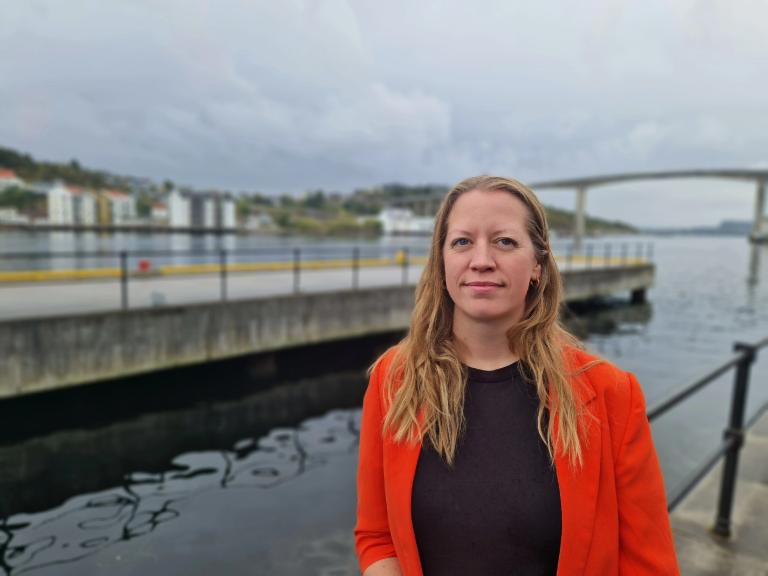Meet the CCRI stakeholders: Møre and Romsdal (CCRI Fellow)
Published on 11.12.2023
The Møre and Romsdal County Council, a CCRI Fellow and regional authority on Norway’s west coast, has set clear ambitions for working with a circular economy, aiming to take a leading position in the development of a green circular economy. In this interview, Solveig Stornes, Project Manager at the Møre and Romsdal Council tells us about the cultural and behavioural barriers it faces, and explains how being part of the CCRI has enabled it to access a larger network of support and inspiration by participating in seminars, conferences, and other activities.

What are the main challenges that you face in your city or region?
The Møre and Romsdal County Council has set clear ambitions for working with a circular economy, aiming to take a leading position in the development of a green circular economy. In our recently adopted Strategy for Climate, Environment, and Energy, a circular economy is identified as one of the key focus areas. Furthermore, our Sustainable County project, a significant regional initiative on sustainability, recognises the importance of a circular economy based on comprehensive sustainability mapping.
Despite these high ambitions, the circular economy in Norway stands at only 2.4%. It is reasonable to assume that this figure is relatively similar for Møre and Romsdal. In our region, transitioning towards a more circular economy is still at an early stage, with various initiatives underway. However, the landscape is fragmented, posing challenges for further implementation.
Cultural and behavioural barriers present additional challenges. Linear economic patterns persist due to economic obstacles and a lack of focus on circularity in procurement strategies. Logistical challenges within the region, difficulties with guaranteed schemes, and the absence of environmental management systems further contribute to the obstacles. Overcoming these challenges requires a coordinated effort, encompassing knowledge dissemination, technological advancements, improved collaboration, and a shift in cultural attitudes and economic incentives. The County Council is committed to addressing these challenges and fostering a robust circular economy that aligns with its sustainability objectives.
How is participating in the CCRI helping you overcome these challenges?
Through being a part of the Circular Cities and Regions Initiative (CCRI), Møre and Romsdal can easily access a larger network for support and inspiration. To be able to participate in seminars, conferences, and group activities, such as webinars and thematic working groups, it provides an excellent platform for knowledge exchange and sharing best practices with others. It has also provided us with opportunities to enlarge our community and collaboration network and given us greater insight when it comes to identifying suitable EU funding opportunities for regional circularity projects.
How about the participation in the OECD policy dialogue, specifically?
We hope the OECD policy dialogue will contribute to consolidating the work on the circular economy and providing it with extra momentum and legitimacy in the region. Through the project we have already gained a better an overview of the stakeholder landscape and laid the foundations for connecting the work on the circular economy in the county.
Furthermore, we hope it will increase our understanding of how laws, regulations, guidelines, policies, instruments, and other structures and systems hinder and/or promote the transition to a more circular economy. Through this collaboration we hope to receive concrete recommendations and guidelines on how to accelerate the circular transition in the county from international competence environments [including organisations such as the OECD] with significant legitimacy and recognition.
This will strengthen our national position in the field through facilitated dialogue between the OECD, national authorities, and the county, and also facilitate building stronger networks with key international stakeholders as well as other European regions and cities working on circular societal transformation.
What are the main barriers and drivers?
Many of the barriers have already been mentioned above. As for the main drivers we see that international regulations, consumer rights, economic incentives, and support schemes for reuse, support the development of a more circular economy.
Tax incentives, subsidies, and support schemes for the environmental certification of buildings act as driving forces for businesses to embrace circular business models. Increased incineration tax per tonne of CO2 is mentioned as an example of an incentive.
The emergence of new technologies such as the Internet of Things, Artificial Intelligence, and blockchain makes it easier to manage resources throughout the life cycle, thus supporting the transition to a circular economy.
Increased awareness of environmental challenges and changes in consumer preferences toward durable and reusable products and services drive demand for circular solutions.




